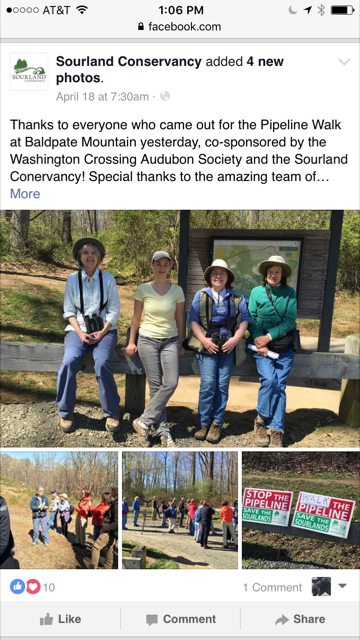 Everyone can get behind a good cause they believe in. My soft spot is nature. Over the past couple of years, I have become a loyal member of a few wildlife and environmental organizations that I find worthy of my financial support.
Everyone can get behind a good cause they believe in. My soft spot is nature. Over the past couple of years, I have become a loyal member of a few wildlife and environmental organizations that I find worthy of my financial support.
What do they all have in common?
They are excellent multichannel marketers that continually pique my interest with all kinds of content: interesting news, information, and visual media. They are also making a difference in this world with the help of generous donations from a growing community of members.
Here’s a look at the variety of communication methods used by two nonprofits I support (at the local and national level):
Sourland Conservancy
Dedicated to “Protecting New Jersey’s Sourland Mountain” (yes there is a “mountain” in New Jersey), this group not only hosts great live events, they also deliver engaging content through their website, brochures, newsletters, and social media. This local nonprofit thrives by communicating with their members and potential donors through consistent and varied media outlets. I have seen this group more than double in size over the past few years and attribute that to their inspirational messaging through multiple community touchpoints.
Here’s how it has grown:
- Email and E-newsletters — This digital content reports on progress, concerns, and calls to action. Members also receive invitations to special events, links to area trail maps, and in-depth articles on the fauna, flora, and geology of the area.
- Facebook — The organization runs a very active page with posts that include action alerts, fun nature videos, and event photos with pictures of members.
- Direct Mail — Newsletters, state-of-the-organization letters, and thank you letters arrive in the mail periodically. The year-end newsletter acknowledges all members by name in a donor roll listing.
- Live Events — The organization hosts numerous events where attendees can learn about historical, cultural and environmental aspects of the region. Activities include multimedia presentations, group hikes, workshops, holiday parties, and outdoor music festivals.
- Volunteer Opportunities — Members join together to conduct research, work on advocacy committees, and help run the organization. I’m a “Sourland Steward.”

A recent Sourland Conservancy Facebook post features photos of members at an event.
Audubon
Audubon “connects people with nature and the power to protect it.” For over a century, this national organization has built a legacy of conservation success. In addition to their tried and true traditional print communication methods, Audubon has evolved as technology has advanced, now using social media, an innovative website, and even an app, to distribute their content.
Here’s how they are doing it today:
- Direct Mail — Audubon believes in personalized mail and mailing often. In this year alone, I have received a dozen direct mail packages. When my membership was about to expire, I received three personalized renewal notices in one month. Guess what? I renewed.
- Audubon Magazine — Members receive bi-monthly issues of Audubon, which features stunning photography and fascinating stories from the field by professional writers and adventurers. Forget about the tax-deductible donation and free tote bag, I’d pay the fee just for the subscription alone.
- A Birding App — Featuring spectacular photos of thousands of birds, this app helps users find them in any area, keep a journal of sightings, and interact with the community. It’s free to those who sign up with Facebook or by email, who are then added to the content marketing audience. Absolutely brilliant.
- Branded Merchandise — A large envelope recently arrived in my mailbox containing the “Spectacular Audubon Notecard Collection,” which I will proudly use in place of store-bought greeting cards. Donors also receive a variety of other Audubon merch like field bags and fleece blankets. Such “gifts” help donors tangibly become brand-loyal members.
- Twitter —Audubon tweets regularly. Since January 2009 @audubonsociety has posted 18.3K tweets to a flock of nearly 100K followers. Impressively, almost all of their tweets use images and photos; a tactic that not only increases engagement, but also leverages their most impactful content used in other channels.
- Instagram — If there was one charitable organization that Instagram was made for, this is it. The avian photographs are mesmerizing. Totaling 827 beautiful posts at last count, the group has attracted 70,000 followers.

A recent Audubon Instagram post featuring a photograph taken by an Audubon award-winning member.
Nonprofits win over hearts and minds.
These nonprofits use varied media and content through multichannel marketing to engage the minds of their readers. This generates multiple touchpoints, allowing them to stay top of mind with their communities without over-infiltrating any one particular channel. In turn, these nonprofits are creating more consistent and natural-feeling interactions, which ultimately spurs a relationship with, and donations from, their audience.


Comments